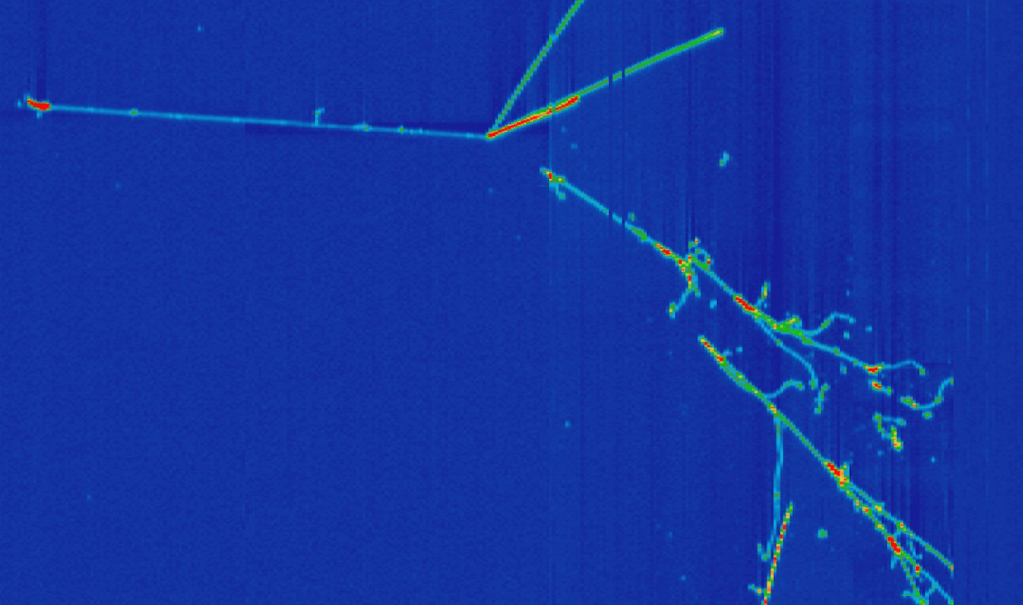There is a relativistic energy loss formula which tells a relation between total energy and the rest-mass energy for the loss, whose complete details I haven’t checked and in relativistic particle physics one can have other ways to lose energy, but the equation I give here has a basic significance.
where E = total energy, m is rest mass or rest energy — each given in appropriate units.
This equation can be interpreted in various ways e.g. I have an article where I use this to explain why we have protons that are so long lived cycles of the total age of the universe. The protons live that long because they have a huge huge energy which can not be lost through any scheme — such as any particle or nuclear decay, in a small amount of time.
(I have explained there how the neutrons live only up-to 15 minutes if they are out of the nucleus that is if they do not live in interaction with the “highly energized” protons)
Now this equation means this is the energy loss coming from just the rest-mass of the particle. That is for any kind of particle reactions to take place one needs a non-zero mass because that differential energy then gives the energy available for the possible channels of reactions. In other words from Relativity it is mass-energy equivalence hence having mass means having energy and from quantum mechanics energy is a probability or expectation value. That is the expectation value of energy “is” the amount of probability flux available for any possible reaction. A reaction is favored if there is energy available for this. Let us check this on the OPERA particles.
[NOTE: a photon has zero mass as per Relativity but not as per quantum mechanics, we have experimental uncertainties and seeing them in line with Uncertainity principle we see that 1st of all we have a way to understand that quantum mechanics and Relativity give good working solutions, the relativistic quantum mechanics being not a completely self consistent understanding, 2ndly the energy-time uncertainity gives rise to speed or distance-time uncertainities in keeping with a massless photon. This I have described in “why a high profile camera ..” article. Alaso note that this means for a precise time a uncertainty in speed that is speed limit c is uncertain by a fixed amount. Is this what is playing into OPERA neutrino speed excess results? ]
1. A neutrino at 17 GeV CANNOT produce even 1 electron from it’s energy loss (1 electron mass = 0.5 MeV)
as Sqrt(2*17*10^9*2) =2* 10^4*13.038 eV = 0.261 MeV. (this is below the threshold of the electron production)
2. A photon at 17 GeV (assuming 10^-7 eV photon mass here a crude upper value from PDG not used for averaging) can produce 29 neutrinos from it’s energy loss.
as Sqrt(2*17*10^9*10^-7) eV = 10*5.831 = 58.31 eV.
i.e. if a neutrino moving at 17 GeV produces a photon by any chance, since that photon will have the ~17 GeV energy, it has a very very high chance that it will turn into a neutrino again, just from the energy loss, if energy is exchanged via this process back to the neutrino it again moves at ~17 GeV. It just gives a kinematical picture.
I think this is really important since there is no other particle with such small masses. Aren’t photon, neutrino, electron the least massive particles we know today? in this order; Photon << neutrino << electron ?? That means “in a race of photon and neutrino”, electron does not come into picture. Photon can change into neutrinos and neutrinos into photons with the neutrino ->>photon ->> neutrino process being a highly favored one, at-least the last leg !!
Using basic Time-Energy relation of Quantum Mechanics (or uncertainity. equation) I had shown why Sheldon Glashow’s bremstrahllung scheme corresponds to a different energy-distance scale than OPERA but this explanation is Relativity and quantum mechanics together, against Sheldon Glashow.

Leave a comment